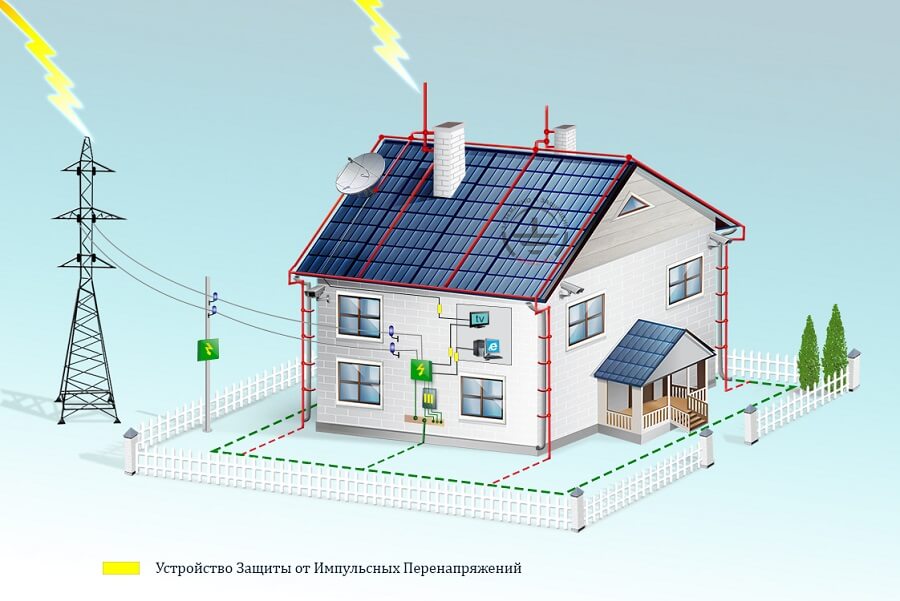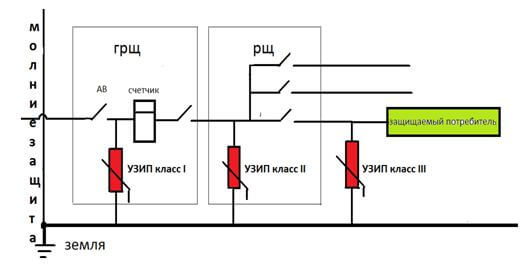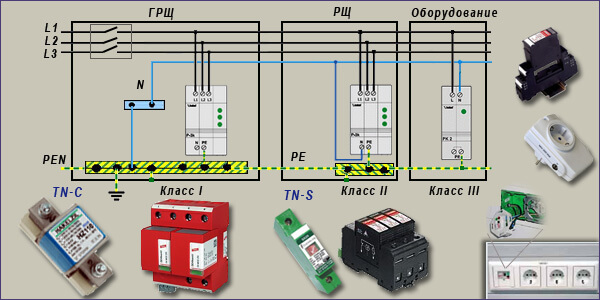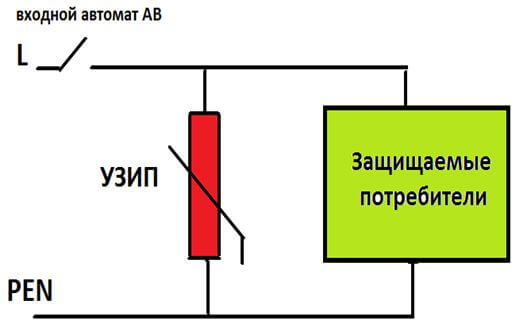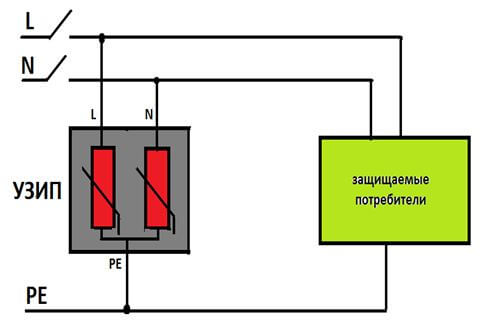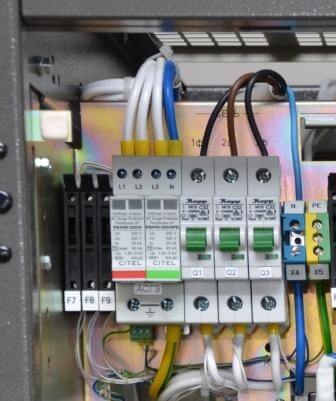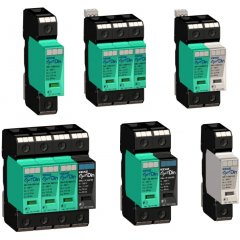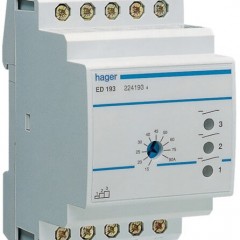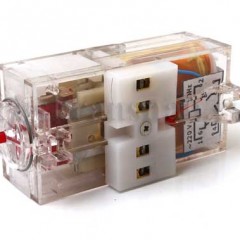How to connect an SPD in a single-phase and three-phase network?
Rules and features of the installation
The installation of overvoltage protection devices is regulated by the Electrical Installation Rules (PUE), which are the main regulatory document in the safe maintenance of electrical installations. According to the requirements of the PUE, overvoltage protection devices must be installed at facilities with the provided lightning protection system, as well as in houses whose electricity is supplied via overhead lines in the regions with an annual duration of lightning periods exceeding 25 hours.
The need to connect an SPD at facilities in areas where thunderstorms are not a frequent occurrence is advisory in nature, however, given the destructive consequences of a direct lightning strike, it is advisable to take all necessary measures to protect against this type of element, even for non-hazardous areas.
Protection against surge voltage of industrial and office buildings, apartment buildings is included in the scope of activities of electrical organizations. The installation and connection of an SPD in a private house or apartment falls on the shoulders of the landlord, therefore, each homeowner needs to, at least in general terms, know the basic rules for arranging surge protection, as well as how to install and how to connect the equipment necessary for this.
Installation of SPDs must be performed in accordance with the requirements of technical standards, which provide 3 levels of protection. As the first level of protection, valve arresters are used, which belong to the category of SPD 1 class. They provide protection against direct lightning impacts on power lines and are installed in ASU (input distribution devices).Additional protection against lightning strikes and switching processes in step-down transformer substations is provided by protective devices of class 2, which are installed and connected in switchboards of a house or apartment. To protect electronics and electrical engineering that is sensitive even to minor surge surges, class 3 surge protection devices are used, which are connected in the consumer power panel in the immediate vicinity of them.
How to install equipment in order to provide three-stage surge protection is shown in the diagram:
More accessible explanation:
Connection options
One of the most important issues is how to connect the SPD in the shield. Almost all connection options are identical and are indicated in the product data sheet. Installation methods for protection devices may vary, depending on where they will be installed, in a single-phase or three-phase network, also depending on grounding systems.
The most modern and meeting all safety requirements is the grounding system tn-sin which the zero working (N) and zero protective (PE) wires in the entire power supply system work separately. System tn-c-s represents a combined version, in which N and PE from the power source to the ASU of the house are combined in one wire, after which separation of neutral and protective conductor. It should be remembered that this circuit will not work without grounding, so it is imperative to equip it. Tn-c system the simplest and most common grounding system in an obsolete housing stock, in which a single wire (PEN) plays the role of a neutral and a working conductor.
The diagram below shows how to connect a Class II SPD in a single-phase network installed in the panel of an apartment or private house with two options for grounding. For this connection option, it is necessary to select the simplest single-block protective device, with the corresponding operating voltage.
Connection diagram with tn-c grounding system:
If the tn-s grounding system is provided, in this case, the installation and connection of an SPD consisting of two modules, the design of which provides separate terminals, for connecting the phase, zero working and protective wires, indicated by the corresponding marking, will be required.
SPD connection in a three-phase network is carried out as shown in the photo:
When installing an SPD, it is necessary to provide means for protecting the network in the event of a short circuit in the device and connect it through an automatic machine or through a fuse. The apparatus can be installed before and after the meter, in the second case, the meter will remain unprotected from surge voltage.
The video below demonstrates how to connect this unit in the dashboard:
So we examined how the SPD should be connected in the shield. We hope that the provided diagram, video and photo examples came in handy and helped you understand how to connect this protective device.
It will be useful to read:

